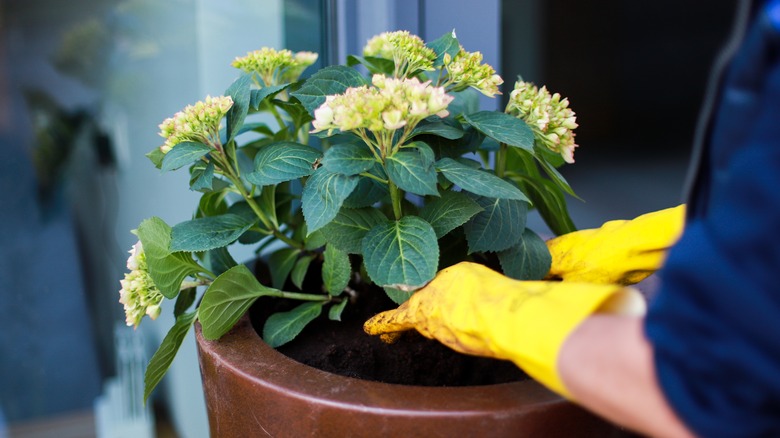Caring for hydrangeas is normally a low-maintenance job, and offers gardeners big, beautiful blooms in varying colors for several months out of the year. It’s important to note that in the fall, the leaves of several varieties of hydrangeas show off various shades of red markings on them naturally. Worry when you start getting leaves that turn entirely purple or suddenly get little sickly-looking purple spots. Typically, a lack of phosphorus in the soil or a fungal disease is the culprit. We’ll talk about each of these and what you can do to fix the problem.
Keep in mind that frost damage can also sometimes cause the leaves to turn purple, or other environmental factors could be at play. If your hydrangea bush got prematurely cool towards the end of the growing season, it would signal the plant to enter its dormancy stage, when the leaves often turn purple. Sometimes this can happen early because of weather anomalies. But by and large, the main two causes are leaf fungus or a lack of necessary nutrients.
Lack of phosphorus and what to do about it

When the leaves of your hydrangea turn purple, it could be a lack of phosphorus in the soil. Hydrangeas are notorious for utilizing a lot of phosphorus, or, if you were trying to alter the acidity of the soil in order to change the color of your blooms, this often results in inadvertently throwing off the pH. Whatever the reason, this is often found to be the cause of purple leaves.
To test this theory, you’ll need to measure the pH of your soil. There are multiple ways to do this, depending on the level of detail you want. If you’ve never had your soil tested and you have a garden, it’s highly recommended. Sending a sample of your soil out to be tested will tell you everything you need to know to grow healthy and tasty plants in your garden. It will tell you exactly what nutrients are in your soil and which amendments you need for growing various crops. You should always check your soil before adding phosphorus to be certain.
Cercospora leaf spot and what to do about it
If you’re noticing bunches of little purple spots on your hydrangea leaves, it’s important to catch cercospora leaf spot as early as possible. Hydrangeas are particularly susceptible to this fungal disease. It starts near the base of the plant and spreads by water splashing spores up onto the foliage. Chances are cercospora leaf spot won’t kill your hydrangea bush, but it can significantly affect its health and flowering ability.
To reduce the spread of the fungus, keep dead and fallen leaves and blooms away from around hydrangeas. Thinning out a thick canopy for increased air circulation is also recommended because of the resulting restriction of spore germination. Ideally, you’re looking for a pH of between 6.0 and 7.0. Above or below those numbers means phosphorus could become bound by other minerals in the soil. Depending on your soil’s pH, you may also need to apply some phosphorus fertilizer around the root zone.